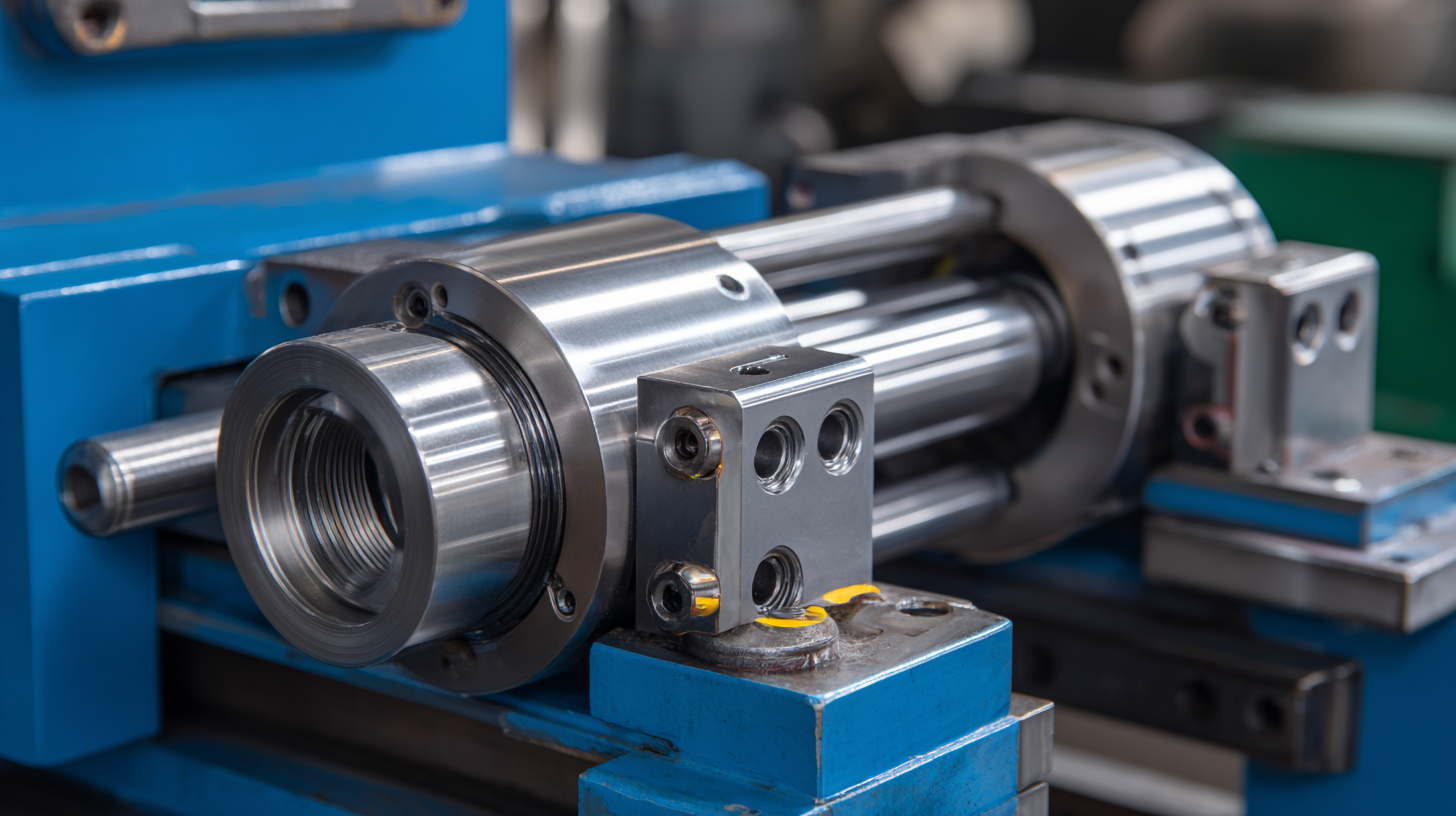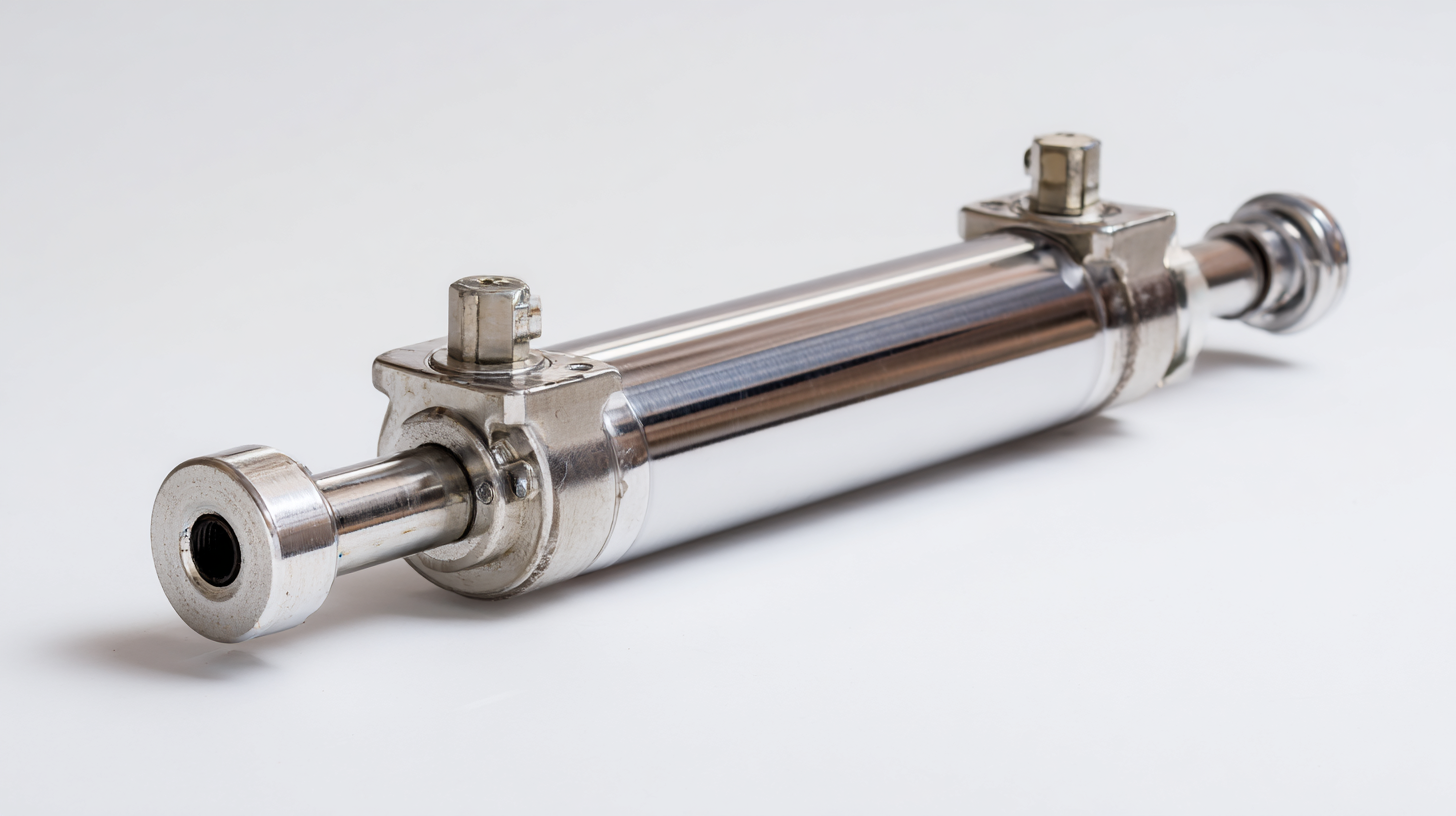How to Choose the Best Small Hydraulic Cylinder for Your Project Needs
When it comes to choosing the right equipment for a project, small hydraulic cylinders play a crucial role in optimizing performance and efficiency. According to a report by MarketsandMarkets, the global hydraulic cylinder market is expected to grow from $16.1 billion in 2020 to $22.9 billion by 2025, reflecting a compound annual growth rate (CAGR) of 7.5%. This growth is largely driven by increasing demand for hydraulic systems in construction, manufacturing, and automotive industries. Selecting the best small hydraulic cylinder not only enhances operational capacity but also contributes to overall project success. Factors such as load capacity, mounting configurations, and stroke length must be carefully considered to ensure reliability and efficiency in the intended application. In this guide, we’ll explore the essential criteria to evaluate when choosing a small hydraulic cylinder that meets your project needs effectively.

Understanding the Basics of Hydraulic Cylinders: Key Terminology Explained
When selecting the best small hydraulic cylinder for your project, it is essential to understand
key terminology associated with hydraulic systems.
Hydraulic cylinders are mechanical devices that utilize pressurized fluid to create linear motion.
Key terms include "bore," which refers to the internal
diameter of the cylinder where the piston moves, and "stroke length,"
indicating the distance the piston travels within the cylinder. Understanding these terms helps you
determine the power and range your project requires.
Another crucial term is "pressure rating," which signifies
the maximum pressure the cylinder can handle. This is vital for ensuring that your hydraulic system
operates efficiently and safely under load. Additionally, "mounting type"
is important as it defines how the cylinder will be attached to other machinery or structures, affecting
installation and operation. Familiarity with these fundamental concepts will enable you to make
informed decisions, ensuring the hydraulic cylinder you choose meets the specific requirements
of your application effectively.
Identifying Your Project Requirements: Load Capacity and Application Factors
When selecting the best small hydraulic cylinder for your project, it's essential to identify your project requirements thoroughly. One of the critical factors to consider is load capacity. The hydraulic cylinder must be able to handle the weight and force needed for your specific application, whether it involves lifting, pushing, or pulling. Assessing the maximum load that the cylinder will need to support allows you to avoid issues surrounding under-capacity, which can lead to project delays or failures. Understanding the operational context, like work cycle and frequency, also plays a crucial role in determining the right capacity.
Application factors are equally important. Consider the environment where your hydraulic cylinder will operate. Factors like temperature, exposure to harsh elements, and spatial constraints can significantly influence your choice. Additionally, emerging technologies such as Artificial Intelligence (AI) can aid in this process by analyzing project data to optimize the selection of hydraulic cylinders. Integrating machine learning techniques can enhance your decision-making process, ensuring that the hydraulic systems are not only efficient but also reliable, contributing to the overall success of your project.
How to Choose the Best Small Hydraulic Cylinder for Your Project Needs - Identifying Your Project Requirements: Load Capacity and Application Factors
| Cylinder Type | Load Capacity (tons) | Stroke Length (inches) | Application | Operating Pressure (psi) |
|---|---|---|---|---|
| Double-Acting Cylinder | 5 | 10 | Construction Equipment | 3000 |
| Single-Acting Cylinder | 3 | 8 | Automotive Repair | 2500 |
| Telescopic Cylinder | 10 | 12 | Transport & Lifting | 3500 |
| Miniature Cylinder | 1 | 4 | Robotics | 1500 |
| Heavy-Duty Cylinder | 15 | 14 | Mining | 4000 |
Selecting the Right Size: How to Calculate Cylinder Dimensions Efficiently
When embarking on a project that requires a small hydraulic cylinder, one of the most critical steps is accurately calculating the cylinder dimensions. Proper sizing ensures optimal performance and efficiency, which directly impacts the success of your project. Begin by identifying the load requirements and the operational pressure of your system. Once you have this information, you can use it to determine the necessary bore and stroke length. The bore size should accommodate the desired force, while the stroke length should reflect the required movement.
To efficiently calculate these dimensions, leverage formulas that relate force, pressure, and area. The basic equation, Force = Pressure x Area, helps you ascertain the bore size by rearranging the formula to Area = Force/Pressure. With the area calculated, you can convert this to diameter using the formula for the area of a circle (Area = π(d/2)²). Another consideration is the cylinder stroke; evaluate how far the cylinder needs to extend to fulfill your project needs and ensure enough clearance for full retraction. By methodically approaching these calculations, you can select the best small hydraulic cylinder tailored to your specific requirements.

Material Matters: Choosing the Best Construction for Your Hydraulic Cylinder
When selecting a small hydraulic cylinder, the construction material plays a pivotal role in determining its durability and efficiency. Materials such as steel, aluminum, and composite blends are commonly used, each offering unique advantages. Steel cylinders are renowned for their strength and resistance to wear, making them ideal for heavy-duty applications. On the other hand, aluminum cylinders are lighter and resistant to corrosion, making them perfect for situations where weight savings are crucial without sacrificing performance.
Another important consideration is the potential exposure to harsh environments. If the hydraulic cylinder will be used in applications where moisture, chemicals, or extreme temperatures are present, opting for materials that provide enhanced protection is essential. Coatings and finishes can also enhance the longevity of a hydraulic cylinder, ensuring it withstands the rigors of operation while maintaining performance. As such, choosing the right material is not just about strength but also about the specific demands of your project, ensuring that your hydraulic systems operate efficiently over their intended lifespan.

Evaluating Performance Features: Key Specifications for Optimal Functionality
When selecting a small hydraulic cylinder for project needs, evaluating performance features is crucial to ensure optimal functionality. Key specifications play a vital role in determining how effectively a hydraulic cylinder will perform under various conditions. One essential parameter to consider is the cylinder's bore size, which directly affects the force output. A larger bore will provide greater force, but it may also result in increased weight and size, so it’s important to balance power requirements with the spatial constraints of your project.
Another important feature to review is the stroke length, which dictates how far the cylinder can extend. Depending on your application, you may need a cylinder that can operate over a longer stroke to accomplish tasks such as lifting or extending components. Additionally, assessing the cylinder's operating pressure is crucial; ensure that the cylinder can handle the pressure demands of your specific application without risking failure. By meticulously examining these key specifications, you can make an informed choice that aligns with your project’s unique requirements.
Performance Features of Small Hydraulic Cylinders
This bar chart illustrates the key performance specifications for small hydraulic cylinders that are crucial for evaluating the best choice for your project needs. The data points compare factors such as maximum pressure, bore diameter, stroke length, weight, and cycle rate.
